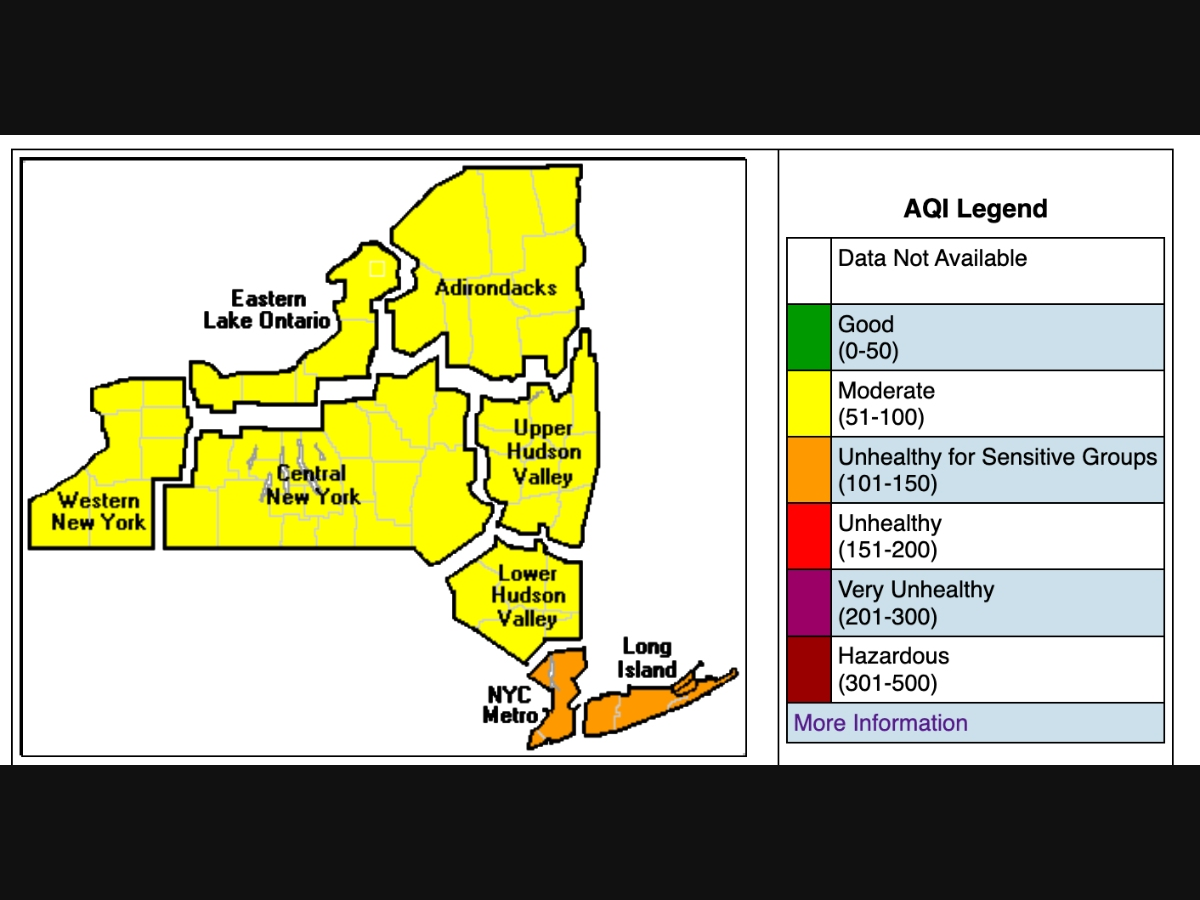Health & Fitness
Ozone, High-Level Smoke: Hudson Valley Air Quality Poor
State officials have issued an advisory for Rockland and Westchester counties.

HUDSON VALLEY, NY — High levels of ozone have lowered the air quality in Rockland and Westchester counties, New York City and Long Island, and state officials have put an advisory in effect through 11 p.m. Friday, warning that the air is ranked Unhealthy for sensitive groups.
It'll be in effect Saturday too.
Meanwhile, smoke from wildfires across North America is high in the atmosphere above New York and much of the Mid-Atlantic and New England. The federal air quality index is at Moderate for particulate matter across the Hudson Valley, according to airnow.gov.
Find out what's happening in Nanuetwith free, real-time updates from Patch.

Summer heat leads to the formation of ground-level ozone, a major component of photochemical smog. Automobile exhaust and out-of-state emission sources are the primary sources of ground-level ozone and the most serious air pollution problems in the northeast. This surface pollutant should not be confused with the protective layer of ozone in the upper atmosphere, said officials at the state Department of Environmental Conservation.
Ozone is not a direct emission, and is produced indirectly when sunlight chemically reacts with nitrogen oxides (NOx) and volatile organic compounds (VOCs) from automobile exhaust and industrial emissions. High ozone is not as visible as PM2.5 because it is a colorless gas, but will produce hazy skies and reduce visibility in high concentrations.
Find out what's happening in Nanuetwith free, real-time updates from Patch.
Ozone levels generally decrease at night and can be minimized during daylight hours by curtailment of automobile travel and the use of public transportation where available.
The DEC urged New Yorkers to take the following energy-saving and pollution-reducing steps:
- use mass transit or carpool instead of driving, as automobile emissions account for about 60 percent of pollution in our cities;
- conserve fuel and reduce exhaust emissions by combining necessary motor vehicle trips;
- turn off all lights and electrical appliances in unoccupied areas;
- use fans to circulate air. If air conditioning is necessary, set thermostats at 78 degrees;
- close the blinds and shades to limit heat build-up and to preserve cooled air;
- limit use of household appliances. If necessary, run the appliances at off-peak (after 7 p.m.) hours. These would include dishwashers, dryers, pool pumps and water heaters;
- set refrigerators and freezers at more efficient temperatures;
- purchase and install energy efficient lighting and appliances with the Energy Star label; and
- reduce or eliminate outdoor burning and attempt to minimize indoor sources of PM 2.5 such as smoking.
Get more local news delivered straight to your inbox. Sign up for free Patch newsletters and alerts.